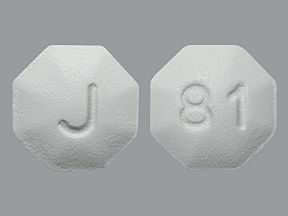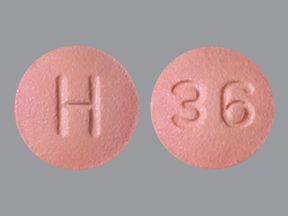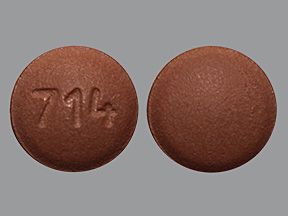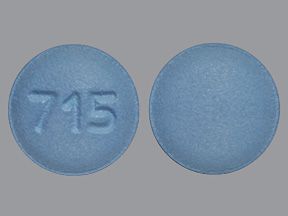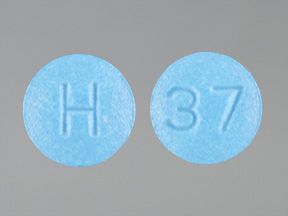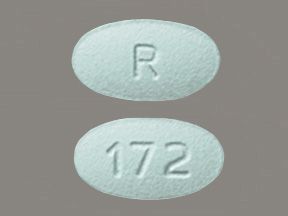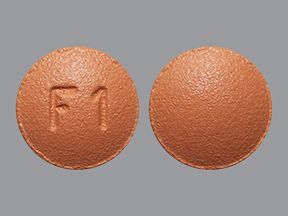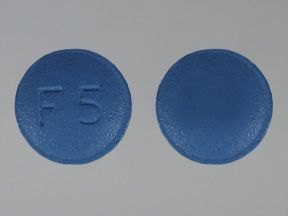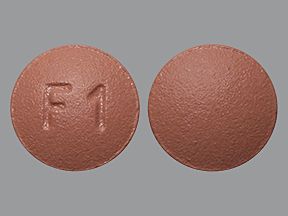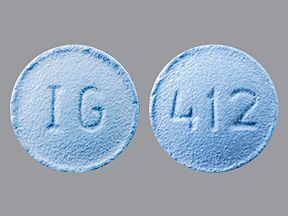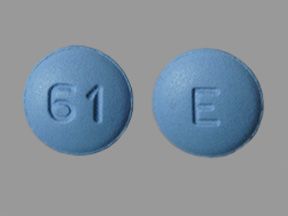Finasteride is a generic drug that’s prescribed for male pattern hair loss and benign prostatic hypertrophy (BPH). The medication is also available as the brand-name drugs Propecia and Proscar. Finasteride comes as an oral tablet.
This drug is FDA-approved to treat these conditions in adult males.* However, it may also be prescribed off-label† to treat hair loss in females.*
If you and your doctor agree finasteride is working well for you, you’ll likely take the medication long term.
* Sex and gender exist on spectrums. Use of the terms “males” and “females” in this article refers to sex assigned at birth.
† Off-label drug use simply means prescribing a drug for a purpose other than what it’s been approved for by the FDA. For more information about this off-label use of finasteride oral tablets, see the “Common questions about finasteride” section below.
Drug details
Finasteride is classified as a 5-alpha-reductase inhibitor. It comes in two strengths: 1 milligram (mg) and 5 mg.
Brand-name versions
Finasteride oral tablets are available in two brand-name versions:
- Propecia is approved only for treating male pattern hair loss and comes only in a strength of 1 mg.
- Proscar is approved only for treating BPH and comes only in a strength of 5 mg.
Effectiveness
For information about the effectiveness of finasteride oral tablets, see the “Finasteride uses” section below.
Finasteride oral tablet is a generic drug. A generic drug is an exact copy of the active drug in a brand-name medication. Propecia and Proscar are the brand-name medications that finasteride oral tablets are based on. A generic is considered to be as safe and effective as the original drug. Generics tend to cost less than brand-name drugs.
If you’re interested in using Propecia or Proscar instead of finasteride oral tablets, talk with your doctor. They can tell you if Propecia or Proscar comes in strengths that can be used for your condition. If you have insurance, you’ll also need to check whether your plan will cover Propecia or Proscar.
To learn more about how generics compare with brand-name drugs, see this article.
Finasteride oral tablets can cause mild or serious side effects. The following lists contain some of the key side effects that may occur while taking this drug. These lists do not include all possible side effects.
For more information about the possible side effects of finasteride oral tablets, see this article. You can also talk with your doctor or pharmacist. They can give you tips on how to manage any side effects that may be concerning or bothersome.
Note: The Food and Drug Administration (FDA) tracks side effects of drugs it has approved. If you would like to notify the FDA about a side effect you’ve had with finasteride oral tablets, you can do so through MedWatch.
Mild side effects
Mild side effects* of finasteride oral tablets can include:
- erectile dysfunction
- loss of libido (desire for sex)
- ejaculation disorder, such as decreased ejaculate volume
- gynecomastia† (abnormal breast growth in males)‡
- breast tenderness
- rash
Most of these side effects may go away within a few days or a couple of weeks. But if they become more severe or don’t go away, talk with your doctor or pharmacist.
* This is a partial list of mild side effects from finasteride oral tablets. To learn about other mild side effects, talk with your doctor or pharmacist, or view the prescribing information for 1-milligram (mg) finasteride oral tablets and 5-mg finasteride oral tablets.
† For more information about this side effect, see the “Side effect details” section below.
‡ Sex and gender exist on spectrums. Use of the term “males” in this article refers to sex assigned at birth.
Serious side effects
Serious side effects from finasteride oral tablets aren’t common, but they can occur. Call your doctor right away if you have serious side effects. Call 911 or your local emergency number if your symptoms feel life threatening or if you think you’re having a medical emergency.
Serious side effects and their symptoms can include:
- Increased risk of prostate cancer.* Symptoms of prostate cancer can include:
- burning or painful urination
- blood in the semen or urine
- a urine flow that is weak or stops and starts
- frequently needing to urinate, especially at night
- Allergic reaction.†
- Depression.†
- Post-finasteride syndrome.†
* For more information about this side effect, see “Does finasteride treat, prevent, or cause prostate cancer?” in the “Common questions about finasteride” section below.
† For more information about this side effect, see the “Side effect details” section below.
Side effect details
Here’s some detail on certain side effects this drug may cause.
Post-finasteride syndrome
Stopping finasteride treatment can cause post-finasteride syndrome. This may result in side effects such as memory problems or sexual dysfunction (problems that affect the desire for or ability to have sex).
Post-finasteride syndrome wasn’t reported in clinical trials, but it has been
Side effects thought to be caused by post-finasteride syndrome can be mild or serious. Although some of these side effects may go away with time, others may be permanent. Reported side effects of post-finasteride syndrome include:
- loss of libido (sex drive or desire to have sex)
- erectile dysfunction or less sensation in the penis
- ejaculatory disorders, such as decreased ejaculate volume
- a curve in the penis or reduced penis size
- gynecomastia (abnormal breast growth in males)
- loss of muscle mass
- very dry skin
- fatigue
- depression
- anxiety
- suicidal thoughts
It’s not known whether certain factors affect a person’s risk for post-finasteride syndrome. Such factors may include dosage or how long a person uses the medication.
There currently isn’t a known treatment for this condition. But your doctor may be able to recommend treatments for side effects that you may have, such as fatigue or depression.
If you have concerns about post-finasteride syndrome, talk with your doctor.
Suicide prevention
If you know someone at immediate risk of self-harm, suicide, or hurting another person:
- Ask the tough question: “Are you considering suicide?”
- Listen to the person without judgment.
- Call 911 or the local emergency number, or text TALK to 741741 to communicate with a trained crisis counselor.
- Stay with the person until professional help arrives.
- Try to remove any weapons, medications, or other potentially harmful objects.
If you or someone you know is having thoughts of suicide, a prevention hotline can help. The 988 Suicide and Crisis Lifeline is available 24 hours a day at 988. During a crisis, people who are hard of hearing can use their preferred relay service or dial 711 then 988.
Gynecomastia
You may have gynecomastia as a side effect from taking finasteride. This side effect was rare in people taking the drug during clinical trials.
Gynecomastia refers to enlarged or overdeveloped breasts in males. Symptoms include:
- swollen or tender breasts
- enlarged breasts or breast lumps
- nipple discharge
Gynecomastia can affect one or both breasts. This condition usually isn’t physically harmful, but it could make a person feel self-conscious or cause other emotional effects.
Gynecomastia sometimes goes away on its own after stopping finasteride treatment. But this condition has also been reported as a symptom of post-finasteride syndrome (see the section just above for more information).
If you have symptoms of gynecomastia while taking finasteride, talk with your doctor. They’ll likely want to see you to evaluate your symptoms. From there, they’ll discuss the treatment options available for this side effect. They may also suggest using a treatment other than finasteride oral tablets for your condition.
Depression
Depression wasn’t reported as a side effect during clinical trials of finasteride. But it has been reported since the drug was approved. Depression may also be caused by post-finasteride syndrome (see the “Post-finasteride syndrome” section above for more information).
So it’s possible for depression to be a side effect while you’re taking finasteride. It may even happen after you stop taking the drug.
With depression, you experience symptoms that affect how you think, feel, and go about your daily activities. It’s normal to feel emotions such as sadness or anxiety. But in people with depression, symptoms last for at least 2 weeks. Besides feeling sad or anxious, symptoms can include:
- hopelessness or pessimism
- irritability
- guilt or feelings of worthlessness
- loss of interest in hobbies or things you used to enjoy
- fatigue
- trouble sitting still or restlessness
- aches or pains in your body without a clear physical cause (such as exercise)
- suicidal thoughts or behavior
If you have symptoms of depression while you’re taking finasteride or after you stop the drug, contact your doctor. They can suggest ways to treat this side effect.
Allergic reactionAs with most drugs, some people can have an allergic reaction after taking finasteride oral tablets.
Symptoms of a mild allergic reaction can include:
- skin rash
- itchiness
- flushing
A more severe allergic reaction is rare but possible. Symptoms of a severe allergic reaction can include:
- swelling under your skin, typically in your eyelids, lips, hands, or feet
- swelling of your tongue, mouth, or throat
- trouble breathing
Call your doctor right away if you have an allergic reaction to finasteride, as the reaction could become severe. Call 911 or your local emergency number if your symptoms feel life threatening or if you think you’re having a medical emergency.
Here are answers to some frequently asked questions about finasteride oral tablets.
Where can I find before and after pictures of people who’ve taken finasteride?
One
Another 2011
If you’d like more information on how well finasteride may work for treating hair loss, talk with your doctor. They can provide you with information on the risks and benefits of taking finasteride.
* Sex and gender exist on spectrums. Use of the terms “females,” “males,” “women,” and “men” in this article refers to sex assigned at birth.
Is there a timeline of possible results with finasteride, such as after 3 months, 6 months, or 2 years? And will I have shedding?
For treating hair loss, you typically need to take finasteride every day for at least 3 months before you notice improvement. But how long the drug takes to start working can vary.
When you first start taking finasteride, it’s possible you may continue to have hair loss, including shedding. This is because it may take the drug several weeks or months before it starts working for you. Your doctor will monitor you while you take finasteride to determine whether the drug is working for you.
If you have additional questions on how soon finasteride may start working for hair loss, talk with your doctor or pharmacist.
How can you reduce the side effects of finasteride?
The best way to reduce side effects from finasteride is to talk with your doctor before you start taking the drug.
Tell them about your complete medical history, including any medications you take. This helps your doctor determine whether finasteride is safe for you to take. Other medical conditions you may have or medications you may take could increase your risk for side effects from finasteride.
In addition, your doctor can tell you about symptoms of side effects to watch for while you’re taking finasteride. They can also let you know whether you have a higher risk for specific side effects.
For more information on the possible side effects of finasteride, see the “Finasteride side effects” section above.
Does finasteride work? Is it safe to use?
Clinical trials have shown finasteride to be effective at treating the following conditions in adult males:
- Male pattern hair loss. This is the most common type of hair loss in males.
- Benign prostatic hyperplasia (BPH). With BPH, the prostate grows too large, which can slow or block urine from passing through the urethra (a tube that runs from the bladder to outside the body).
The Food and Drug Administration (FDA) has approved finasteride for these uses, having found the drug generally safe to use. But it can cause some side effects.
For more information about finasteride’s effectiveness, see the “Finasteride uses” section below. And for more information about its side effects, see the “Finasteride side effects” section above.
Is finasteride used in women? Are there side effects of the drug that happen in women that are different from those that happen in men?
Finasteride isn’t approved for use in females. But it may be used off-label to treat hair loss in females. (Off-label drug use simply means prescribing a drug for a purpose other than what it’s been approved for by the FDA.)
It’s important to note that anyone who is pregnant should not handle finasteride oral tablets that have been crushed or broken. This is because even skin contact with crushed or broken finasteride tablets could cause harm to a fetus. For more information, see the “Finasteride and pregnancy” section below.
If you have questions about finasteride use in females, talk with your doctor.
Does finasteride treat, prevent, or cause prostate cancer?
Finasteride isn’t approved to treat or prevent prostate cancer.
In fact, clinical trials suggest 5-alpha-reductase inhibitors such as finasteride may increase the risk of prostate cancer. In particular, finasteride may increase a person’s risk for a more serious form of prostate cancer.
If you take finasteride, your doctor will order blood tests to monitor you for prostate cancer. They can also answer any questions you may have about finasteride and your risk for prostate cancer.
The finasteride oral tablet dosage your doctor prescribes will depend on the type and severity of the condition you’re treating.
The following information describes dosages that are commonly used or recommended. But be sure to take the dosage your doctor prescribes for you. Your doctor will determine the best dosage to fit your needs.
Drug strengths: 1 mg and 5 mg
Finasteride oral tablets come in two strengths: 1 milligram (mg) and 5 mg.
Dosage for hair loss
For treating male pattern hair loss, the recommended finasteride dosage is 1 mg once per day.
Dosage for benign prostatic hyperplasia
For treating benign prostatic hyperplasia (BPH), the recommended finasteride dosage is 5 mg once per day.
What if I miss a dose?
If you miss a dose of finasteride, try to take it as soon as you remember. But if it’s the day after you were supposed to take a dose, skip the missed dose and take your next dose as scheduled.
Do not take more than one dose to make up for the missed dose. This could increase your risk for side effects from finasteride.
To help make sure that you don’t miss a dose, try using a medication reminder. This can include setting an alarm or timer on your phone or downloading a reminder app. A kitchen timer can work, too.
Will I need to use this drug long term?
Finasteride is meant to be used as a long-term treatment. If you and your doctor determine that finasteride is safe and effective for you, you’ll likely take the drug long term.
The Food and Drug Administration (FDA) approves prescription drugs such as finasteride oral tablets to treat certain conditions. Finasteride oral tablets may also be prescribed off-label for other conditions. Off-label drug use means prescribing a drug for a purpose other than what it’s been approved for by the FDA.
Finasteride for hair loss
Finasteride oral tablets are approved for treating male pattern hair loss. This is the most common cause of hair loss in males.*
With this condition, hair loss occurs at the highest point of the scalp. It also occurs at the front part of the side of the head, near the temples. It’s possible that genetics play a part in this type of hair loss.
Male pattern hair loss may be due to an unusual response to hormones called androgens. Finasteride helps prevent hair loss by lowering the amount of certain androgens in the body. For the details of how finasteride does this, see the “How finasteride works” section below.
* Sex and gender exist on spectrums. Use of the term “males” in this article refers to sex assigned at birth.
Effectiveness for hair loss
Clinical trials have found finasteride to be effective for treating male pattern hair loss. To learn how well the drug worked to treat this condition, check out finasteride’s prescribing information.
The American Academy of Family Physicians recommends finasteride as a treatment option for male pattern hair loss.
If you have questions about how well finasteride works for treating hair loss, talk with your doctor or pharmacist.
Finasteride for benign prostatic hyperplasia
Finasteride is prescribed to treat benign prostatic hyperplasia (BPH) in adult males.
With BPH, the prostate grows too large, which can slow or block urine from passing through the urethra (a tube that runs from the bladder to outside the body). The prostate is a gland that is part of the male reproductive system. It plays a role in semen and hormone production, and it also helps regulate urine flow.
It’s thought that hormones called androgens are responsible for causing BPH. Finasteride helps treat BPH by lowering the amount of certain androgens in the body. For details of how finasteride does this, see the “How finasteride works” section below.
Symptoms of BPH include:
- needing to urinate more frequently than usual
- sudden urges to urinate
- straining to urinate
- weak or interrupted urine stream
- frequently waking at night to urinate
When used to treat BPH, finasteride has been shown to:
- ease BPH symptoms
- reduce the risk of urinary retention
- reduce the need for surgery to treat BPH
Finasteride has not been approved to prevent prostate cancer. For more information, see “Does finasteride treat, prevent, or cause prostate cancer?” in the “Common questions about finasteride” section above.
To learn more about conditions that affect the prostate, including BPH, see this article list.
Effectiveness for benign prostatic hyperplasia
Clinical trials have found finasteride to be effective for treating BPH. To learn how well the drug worked to treat this condition, check out finasteride’s prescribing information.
American Urological Association guidelines recommend 5-alpha-reductase inhibitors, such as finasteride, for treating symptoms of BPH. These guidelines also recommend this class of drug for reducing the need for future prostate-related surgery.
If you have additional questions about how well finasteride works for treating BPH, talk with your doctor or pharmacist.
Finasteride and children
Finasteride oral tablets are not approved for use in children. They’re only prescribed to treat certain conditions in adults.
Depending on the condition you’re treating, finasteride may be prescribed alone or with other drugs.
For treating benign prostatic hyperplasia (BPH), your doctor may have you take only finasteride. Or they may have you take it with another drug called doxazosin (Cardura). Doxazosin is a type of drug called an alpha-blocker, and it’s also approved to treat BPH.
Guidelines from the American Urological Association (AUA) recommend a combination of 5-alpha-reductase inhibitor, such as finasteride, and an alpha-blocker as a treatment option for BPH.
If you have questions about using finasteride oral tablets with other drugs, talk with your doctor or pharmacist.
Other drugs are available that can treat your condition. Some may be a better fit for you than others. If you’re interested in finding an alternative to finasteride oral tablets, talk with your doctor. They can tell you about other medications that may work well for you.
Note: Some of the drugs listed here are prescribed off-label to treat these specific conditions. Off-label drug use means prescribing a drug for a purpose other than what it’s been approved for by the FDA.
Alternatives for hair loss
Examples of other drugs that may be used to treat male pattern hair loss include:
- minoxidil (Rogaine)
- triamcinolone acetonide
Alternatives for benign prostatic hyperplasia
Examples of other drugs that may be used to treat benign prostatic hyperplasia include:
- dutasteride (Avodart)
- alfuzosin (Uroxatral)
- doxazosin (Cardura)
- tamsulosin (Flomax)
- terazosin
Finasteride is approved by the Food and Drug Administration (FDA) to treat the following conditions in adult males:*
- Male pattern hair loss. This is the most common type of hair loss in males.
- Benign prostatic hyperplasia (BPH). With BPH, the prostate grows too large, which can slow or block urine from passing through the urethra (a tube that runs from the bladder to outside the body).
Finasteride inhibits an enzyme† called 5-alpha-reductase. This is called the drug’s mechanism of action (how the drug works).
The following sections describe how 5-alpha-reductase affects hair loss and BPH, and how finasteride works to treat these conditions.
* Sex and gender exist on spectrums. Use of the term “males” in this article refers to sex assigned at birth.
† Enzymes are proteins that aid chemical changes in the body.
Finasteride for hair loss
Finasteride oral tablets are approved for treating male pattern hair loss. This is the most common cause of hair loss in males.
Male pattern hair loss may be due to an unusual response to hormones called androgens. High levels of an enzyme called 5-alpha-reductase occur in the scalps of people with this condition. This enzyme helps to create androgens, including testosterone and dihydrotestosterone (DHT).
Finasteride is a 5-alpha-reductase inhibitor, which means it stops 5-alpha-reductase from working. This helps prevent hair loss by lowering the amount of testosterone and DHT your body makes.
Finasteride for BPH
With BPH, the prostate grows too large, which can slow or block urine from passing through your urethra (a tube that runs from the bladder to outside the body).
Hormones called androgens are thought to be responsible for causing BPH. The enzyme 5-alpha-reductase plays a major role in creating androgens, such as testosterone and DHT. These androgens send signals to your prostate to grow. If a person has BPH, their prostate has grown too large. This can cause symptoms of BPH, such as needing to urinate more frequently than usual or sudden urges to urinate.
Finasteride is a 5-alpha-reductase inhibitor, which means it stops 5-alpha-reductase from working. This helps treat BPH by preventing signals that tell your prostate to grow.
How long does it take to work?
Finasteride begins working as soon as you take a dose. But you may not feel the medication working right away. In fact, you may need to take finasteride for several months before you experience its full effects.
For treating BPH, you’ll likely take finasteride for at least 6 months to see whether it works to treat your BPH symptoms. The drug may take more or less time in some people to start working.
For treating hair loss, you typically need to take finasteride for at least 3 months before you notice improvement. The drug may take less or more time to decrease hair loss in some people.
How long does finasteride stay in your system?
In people ages 60 years and younger, finasteride has a half-life of about 5 to 6 hours. (A drug’s half-life is the time it takes for your body to get rid of half of a dose.) This extends to 8 hours in people ages 70 years and older.
You may wonder how finasteride compares with similar drugs, such as the generic prescription drug dutasteride. The following table gives an overview of these two drugs.
| Finasteride | Dutasteride | |
| Form | • oral tablet | • oral capsule |
| Uses* | • benign prostatic hyperplasia (BPH) • male† pattern hair loss | • BPH |
| Brand-name version(s) | • Propecia (approved only to treat male pattern hair loss) • Proscar (approved only to treat BPH) | • Avodart |
* For these purposes, finasteride and dutasteride are only approved for use in adult males.
† Sex and gender exist on spectrums. Use of the term “males” in this article refers to sex assigned at birth.
The side effects for both drugs tend to be similar.
One difference is that finasteride does not have any reported drug interactions, while dutasteride has several.
To learn more about how finasteride and dutasteride compare, talk with your doctor or pharmacist. They can also give you details about the brand-name versions of these drugs.
There aren’t known interactions between taking finasteride and consuming alcohol.
Keep in mind that drinking alcohol could increase your risk for side effects from finasteride, such as erectile dysfunction. Drinking alcohol may also make certain benign prostatic hyperplasia symptoms worse, such as frequently needing to urinate.
If you drink alcohol, talk with your doctor about how much alcohol is safe for you to consume while you’re taking finasteride.
Finasteride oral tablets aren’t known to interact with other medications, herbs, supplements, or foods. This doesn’t mean interactions can’t happen with finasteride.
Before taking finasteride oral tablets, talk with your doctor and pharmacist. Tell them about all prescription, over-the-counter, and other drugs you take. Also tell them about any vitamins, herbs, and supplements you use. Sharing this information can help you avoid potential interactions.
If you have questions about drug interactions that may affect you, ask your doctor or pharmacist.
As with all medications, the cost of finasteride oral tablets can vary. The actual price you’ll pay depends on your insurance plan, your location, and the pharmacy you use.
Keep in mind that you may be able to get a 90-day supply of finasteride oral tablets. If approved by your insurance company, getting a 90-day supply of the drug could reduce your number of trips to the pharmacy and help lower the cost. If you’re interested in this option, check with your doctor or your insurance company.
Before approving coverage for finasteride oral tablets, your insurance company may require you to get prior authorization. This means that your doctor and insurance company will need to communicate about your prescription before the insurance company will cover the drug. The insurance company will review the prior authorization request and decide if the drug will be covered.
If you’re not sure if you’ll need to get prior authorization for finasteride oral tablets, contact your insurance company.
The sections below provide additional information about finasteride’s cost. For more details about finasteride and cost, see this article.
Financial and insurance assistance
Financial assistance to help you pay for finasteride oral tablets may be available.
Medicine Assistance Tool and NeedyMeds are two websites offering resources that may help decrease the price you pay for finasteride oral tablets. They also offer tools to help you find low cost healthcare, as well as educational resources. To learn more, visit these sites.
Mail-order pharmacies
Finasteride oral tablets may be available through a mail-order pharmacy. Using this service may help lower the drug’s cost and allow you to get your medication without leaving home.
If recommended by your doctor, you may be able to receive a 90-day supply of finasteride oral tablets, so there’s less concern about running out of the medication. If you’re interested in this option, check with your doctor and your insurance company. Some Medicare plans may help cover the cost of mail-order medications.
If you don’t have insurance, you can ask your doctor or pharmacist about online pharmacy options.
You should take finasteride according to the instructions your doctor or a healthcare professional gives you.
Finasteride oral tablets are tablets that you swallow. Regardless of the condition you’re using the drug to treat, you’ll likely take finasteride once per day.
When to take
You may take your finasteride dose any time of day.
To help make sure that you don’t miss a dose, try using a medication reminder. This can include setting an alarm or timer on your phone or downloading a reminder app. A kitchen timer can work, too.
Taking finasteride with food
You may take finasteride oral tablets with or without food.
Can finasteride be crushed, split, or chewed?
The manufacturer hasn’t stated whether finasteride oral tablets may be crushed, split, or chewed.
It’s important to note that anyone who is pregnant should not handle finasteride oral tablets that have been crushed or broken. This is because even skin contact with crushed or broken finasteride tablets could cause harm to a fetus. In case of skin contact, immediately wash the affected area with soap and water.
Finasteride oral tablets that haven’t been crushed or broken have a protective film coating that makes them safe to handle.
Before you crush, split, or chew finasteride oral tablets, talk with your doctor or pharmacist. They can advise you on whether this is acceptable with the tablets you’re prescribed. They may also suggest other treatments for your condition that may be easier for you to take.
If you’re pregnant or planning to become pregnant, you should not use finasteride. Finasteride is not approved for use in females.*
Animal studies showed that male offspring of pregnant animals given finasteride were born with abnormalities in their genitals. This is caused by how the drug works. But animal studies don’t always predict what will happen in people.
It’s important to note that anyone who is pregnant should not handle finasteride oral tablets that have been crushed or broken. This is because even skin contact with crushed or broken finasteride tablets could cause harm to a fetus. In case of skin contact, immediately wash the affected area with soap and water.
Finasteride oral tablets that haven’t been crushed or broken have a protective film coating that makes them safe to handle.
If you have additional questions about finasteride and pregnancy, talk with your doctor.
* Sex and gender exist on spectrums. Use of the terms “males” and “females” in this article refers to sex assigned at birth.
Finasteride and fertility
A 2013 study found that finasteride may lower sperm counts in some males who take the drug. The same study showed that sperm counts returned to usual levels in most cases after treatment with finasteride ended.
Talk with your doctor about how finasteride may affect your fertility before you begin treatment with the medication.
You should not use finasteride if you’re pregnant or can become pregnant. Finasteride is not approved for use in females.*
If you’re sexually active and you or your partner can become pregnant, talk with your doctor about your birth control needs while you’re using finasteride.
For more information about taking finasteride oral tablets during pregnancy, see the “Finasteride and pregnancy” section above.
* Sex and gender exist on spectrums. Use of the term “females” in this article refers to sex assigned at birth.
It’s not known whether finasteride passes into human breast milk. There also haven’t been studies on whether the drug could cause side effects in a child who’s breastfed.
It’s important to note that you should not take finasteride if you’re pregnant or planning to become pregnant.
If you have questions about breastfeeding and treatment options for your condition, talk with your doctor.
Before taking finasteride oral tablets, talk with your doctor about your health history. Finasteride oral tablets may not be right for you if you have certain medical conditions or other factors affecting your health. These include:
- Liver problems. Your body uses your liver to help get rid of finasteride after you take a dose. If you have liver problems, levels of finasteride could build up in your body. This can increase your risk for side effects from the medication. Based on how severe your liver problems are, your doctor will determine whether finasteride is safe for you to take.
- Prostate problems, if you’re using the drug for male pattern hair loss. Medications such as finasteride may increase your risk for prostate cancer.* Finasteride can also affect a lab test result that your doctor may use to track your prostate health. Before you start taking finasteride for male pattern hair loss, be sure your doctor is aware of any prostate problems you may have. This will help your doctor accurately track your prostate health while you’re taking the drug.
- Allergic reaction. If you’ve had an allergic reaction to finasteride or any of its ingredients, you should not take finasteride oral tablets. Ask your doctor what other medications are better options for you.
- Pregnancy. People who are pregnant or can become pregnant should not use finasteride. For more information, see the “Finasteride and pregnancy” section above.
- Breastfeeding. It’s unclear whether finasteride passes into breast milk or can cause harm to a child who’s breastfed. For more information, see the “Finasteride and breastfeeding” section above.
* For more information about this side effect, see “Does finasteride treat, prevent, or cause prostate cancer?” in the “Common questions about finasteride” section above.
Note: For more information about the potential negative effects of finasteride oral tablet, see the “Finasteride side effects” section above.
Do not use more finasteride oral tablets than your doctor recommends. For some drugs, doing so may lead to unwanted side effects or overdose.
What to do in case you take too much finasteride
If you think you’ve taken too much of this drug, call your doctor. You can also call the American Association of Poison Control Centers at 800-222-1222 or use its online tool. But if your symptoms are severe, call 911 or your local emergency number, or go to the nearest emergency room right away.
When you get finasteride oral tablets from the pharmacy, the pharmacist will add an expiration date to the label on the bottle. This date is typically 1 year from the date they dispensed the medication.
The expiration date helps guarantee that the medication is effective during this time. The
Storage
How long a medication remains good can depend on many factors, including how and where you store the medication.
Finasteride oral tablets should be stored at a room temperature between 68°F and 77°F (20°C to 25°C). They can be stored at a temperature of 59°F to 86°F (15°C to 30°C) for short periods of time, such as when traveling. Keep the tablets in a tightly sealed container away from light. Avoid storing this medication in areas where it could get damp or wet, such as bathrooms.
Disposal
If you no longer need to take finasteride oral tablets and have leftover medication, it’s important to dispose of it safely. This helps prevent others, including children and pets, from taking the drug by accident. It also helps keep the drug from harming the environment.
This article provides several useful tips on medication disposal. You can also ask your pharmacist for information about how to dispose of your medication.
Disclaimer: Medical News Today has made every effort to make certain that all information is factually correct, comprehensive, and up to date. However, this article should not be used as a substitute for the knowledge and expertise of a licensed healthcare professional. You should always consult your doctor or another healthcare professional before taking any medication. The drug information contained herein is subject to change and is not intended to cover all possible uses, directions, precautions, warnings, drug interactions, allergic reactions, or adverse effects. The absence of warnings or other information for a given drug does not indicate that the drug or drug combination is safe, effective, or appropriate for all patients or all specific uses.


